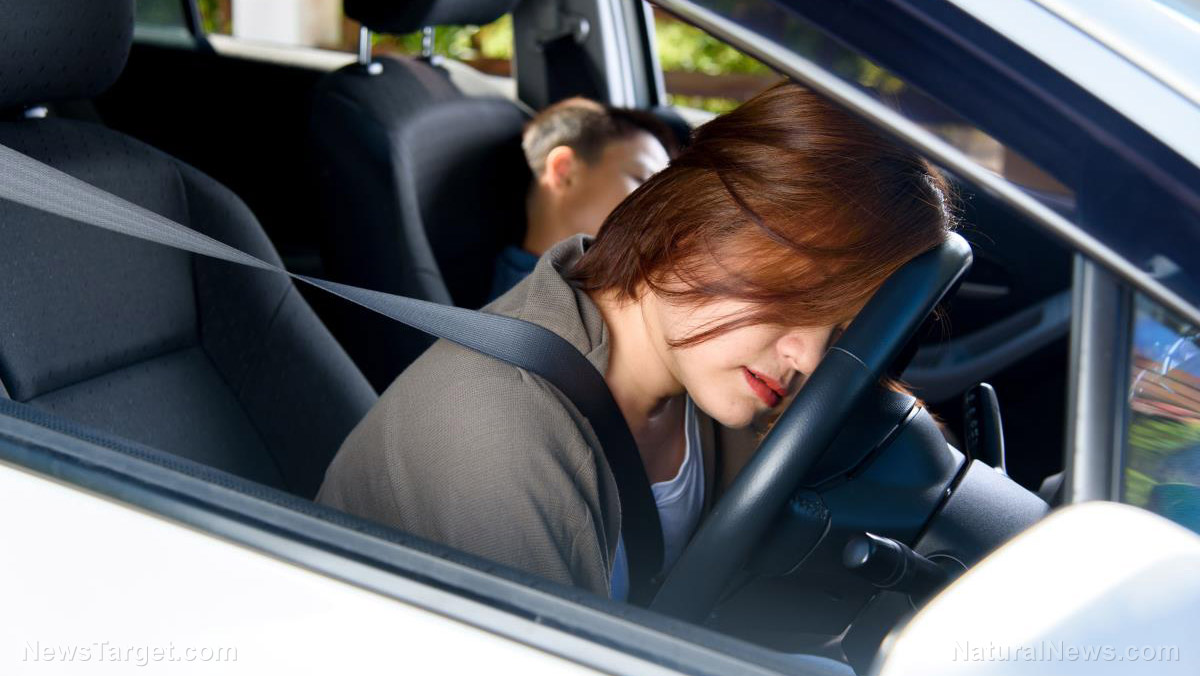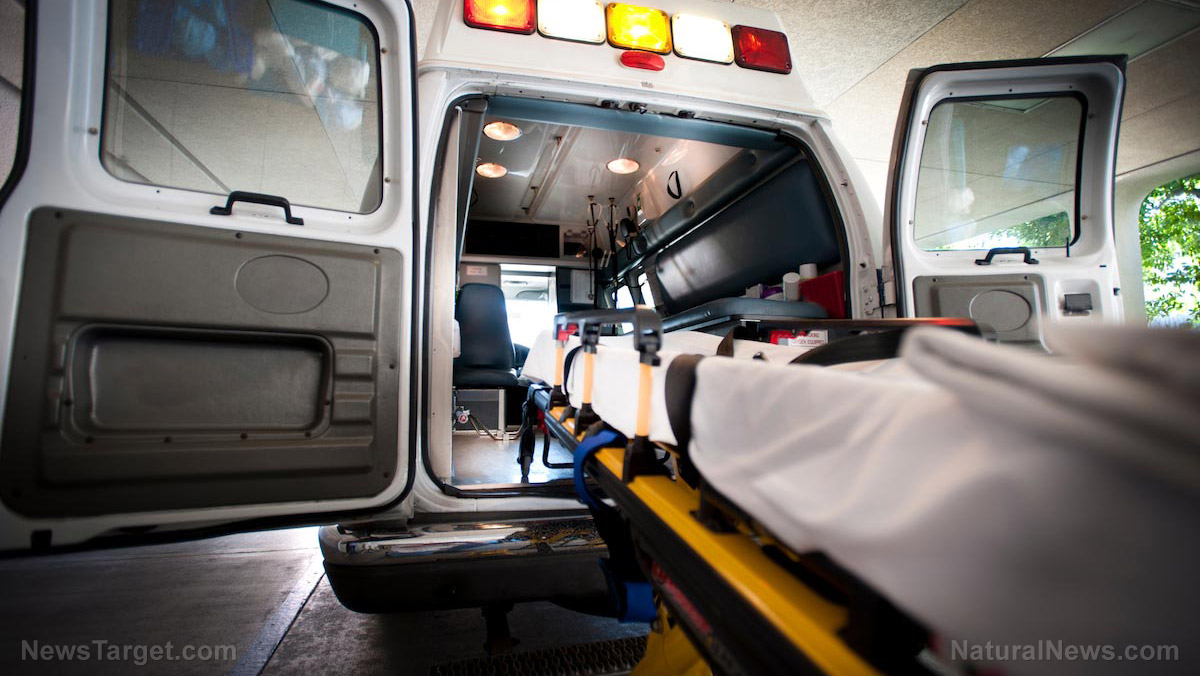Modern cars are safer, but female passengers are still more likely to get injured in car crashes than males (because biology is real)
06/17/2020 / By Franz Walker

Improvements in automotive safety standards and equipment over the past decade or so have made modern cars much safer than older models. A recent study, however, demonstrates that women are at a higher risk of injury during crashes than men, even when wearing seat belts.
Conducted by researchers at the University of Virginia’s Center for Applied Biomechanics, the study found that female occupants had a 73 percent higher risk of being seriously injured in a frontal-impact collision — one of the most common types of crashes — compared to males.
Newer cars are safer, but women are still at higher risk
The study, published in the journal Traffic Injury and Prevention, analyzed data from the Crashworthiness Data System (CDS) of the National Highway Traffic Safety Administration‘s National Automotive Sampling System. Specifically, the study looked at crash data reported by police from 1998 to 2015.
Using the CDS data, the researchers focused on injuries to belted occupants, aged 13 and older, during frontal-impact collisions. This involved looking at over 31,000 occupants involved in nearly 23,000 front-end crashes. These occupants were comprised of a nearly equal number of males and females. Not included, however, were pregnant women who were past the first trimester.
According to the study, occupants of newer cars — those manufactured for the model year 2009 and onward — were only half as likely to sustain serious injuries compared to if they were riding an older car. Newer cars demonstrated a lower risk of skull fractures, abdominal injury, cervical spine injury, as well as knee-hip-thigh injuries and ankle injury. The risk of serious rib fractures and sternum fractures was not significantly reduced in newer cars, however.
The study also shows that female occupants continue to be in more vulnerable positions when involved in frontal-impact collisions, even when they were wearing a seat belt. This remained true even when other factors, such as the rider’s age, height, weight, body mass index and seating position were taken into account.
The worse part is that despite there being nearly a decade of research that highlights this disparity, the reason for the higher risk for women has yet to be found.
“Until we understand the fundamental biomechanical factors that contribute to increased risk for females, we’ll be limited in our ability to close the risk gap,” said Jason Forman, a principal scientist with the Center for Applied Biomechanics and one of the author’s of the study.
“This will take substantial effort, and in my view the National Highway Traffic Safety Administration does not have the resources needed to address this issue.”
Tips to avoid getting into a crash
Regardless of the advancements made to car safety, frontal-impact collisions remain the number one injury and fatality-causing crash. It is responsible for 64 percent of all fatalities and 65 percent of injuries for front-seat occupants in America. (Related: The deadly poison lurking in your car’s air bags.)
To minimize your chances of getting into a crash, try the following tips when driving.
- Avoid the fast lane — Most highway accidents occur on the left lane or the “fast lane.” Aside from speeds in this lane generally being higher, you also have less “escape routes” here. By being in the center or right lanes, you can quickly change lanes or even pull into the shoulder should the need arise.
- Keep scanning the road ahead — Don’t just focus on the vehicle in front of you. Rather, watch the traffic in front of that vehicle as well. This increases your chances of spotting a problem early, giving you enough time to react. It also means fewer chances of rear-ending the vehicle you’re following.
- Minimize blind spots — Adjust your mirrors so that they can provide you with a near-seamless view of what’s happening behind you. However, even if you do this, your vehicle may still have blind spots. With this in mind, actively look around you so you can see what’s happening in the places that your mirrors miss.
- Drive with your hands at the 9 and 3 o’clock position — Some people tend to be lazy and simply drive with one hand at the 12 o’clock position on their steering wheel. However, it’s much better to have both hands at the 9 and 3 o’clock positions. This gives you more control of your vehicle, especially in times where you need to make quick maneuvers.
- Get into the “race car driver” seating position — One trick to get better control of your wheel is to adopt the seating position used by race car drivers. This involves putting your seat close enough to the wheel so that your wrists rest on the top of the steering wheel when your arms are outstretched. Not only does this let your hands easily reach the 9 and 3 o’clock positions, but the relaxed position also helps you avoid fatigue.
- Judge a driver by the car’s condition — A car that has body damage may indicate an inattentive driver who’s more prone to collisions. Also watch out for drivers who drift in and out of lanes as they may either preoccupied with their cell phone or drunk.
- Know your car’s limits — Learn how your car reacts in certain conditions. If it tends to lean while rounding corners, this is a warning that you should not move the wheel suddenly at high speeds as it may cause it to roll over. Also be familiar with your car’s brakes and how long it takes for them to stop the car when you step on them fully.
- Keep your car in good shape — Try to stick to your manufacturer’s recommended maintenance schedule. This ensures that your car performs at its best, especially in emergency situations.
- Avoid driving at night — Unless you really have to, don’t drive at night. Not only are you likely be tired, but other drivers around you may be tired as well. Even worse, there’s a higher chance of encountering drunk drivers at night.
Use the above tips to become a better driver and minimize your chances of crashing. This will help keep not just you, but your passengers and other drivers around you safe as well.
Sources include:
NHTSA.gov[PDF]
Tagged Under: accident, automobile, car crash, car safety, cars, collisions, Drunk driving, frontal-collision impact, highway safety, injuries, prevention, road safety, seat belt, survival, vehicle, women's health



















